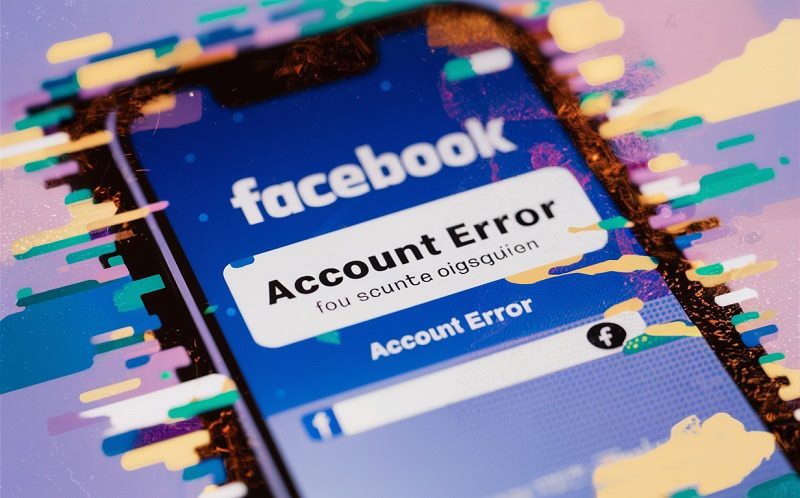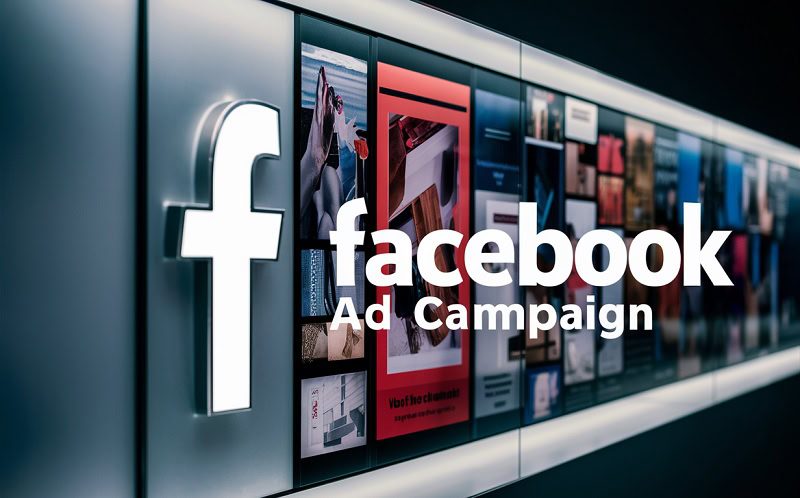Struggling to choose the right Facebook ad goal for your business can be a head-scratching experience. With so many options available, it can be tough to know which one will give you the best results.
But here’s the thing: there is no single “best” Facebook ad goal.
In fact, the best ad goal for your business will depend on your specific goals, target audience, and marketing strategy. What works for one business may not work for another. And that’s okay.
The key is to understand the different ad goals available and choose the one that aligns with your business objectives.

Boost E-Commerce ROI: Download Our Free CPA & ROAS Calculator
In this article, we’ll break down each Facebook ad goal, explain what it’s perfect for, and discuss the pros and cons of each.
By the end, you’ll have a clear understanding of which goal is the best fit for your business.
Now, let’s get down to it!

1. Brand Awareness
If you want to get your business in front of as many people as possible, the Brand Awareness goal is a great choice. This goal is all about increasing awareness of your brand and getting people familiar with what you offer.
The Brand Awareness goal works best for businesses that are just starting out or launching a new product or service. It’s also a good choice if you want to reach a new audience or expand your reach in a specific area.
One of the biggest pros of the Brand Awareness goal is that it can help you build trust and credibility with potential customers. When people see your ads repeatedly, they start to recognise your brand and feel more comfortable doing business with you.
Another advantage is that the Brand Awareness goal can be more affordable than some other goals. Since you’re not necessarily trying to get people to take a specific action, you may be able to reach a larger audience with a smaller budget.
However, keep in mind that the Brand Awareness goal doesn’t necessarily lead to immediate sales or conversions. It’s more of a long-term strategy that only pays off with time.
2. Traffic
The Traffic goal is the way to go if your aim is to get people to visit your website. This option is all about driving clicks to your site and getting people to engage with your content.
The Traffic goal is a great choice for businesses that want to showcase their products or services on their website. It’s also a good choice if you have a blog or other content that you want people to read and share.
One major upside to the Traffic goal is that it can help you build your email list or generate leads. By getting people to visit your site, you can encourage them to sign up for your newsletter or fill out a contact form.
However, like the Brand Awareness goal, the Traffic goal doesn’t necessarily lead to immediate sales or conversions. Just because someone clicks on your ad doesn’t mean they’ll make a purchase.
And if your website isn’t optimised for conversions, you may be wasting your ad budget on clicks that don’t lead to anything. Make sure your site is user-friendly and has clear calls to action before you start running Traffic ads.
3. Engagement
If you want to build a community around your brand and get people interacting with your content, the Engagement goal is your best bet. This goal is all about getting likes, comments, and shares on your posts.
The Engagement goal is perfect for businesses that want to build relationships with their customers and create a loyal following. It’s also a good choice if you have a strong social media presence and want to encourage more interaction.
One of the biggest pros of the Engagement goal is that it can help you build trust and credibility with your audience. When people see that others are interacting with your brand, they’re more likely to do the same.
The Engagement goal also doesn’t directly lead to sales or conversions. Liking or commenting on your post doesn’t equate to a purchase.
4. App Installs
You should consider the App Installs goal the way to go if you have a mobile app that you want people to download. This goal is mainly about getting people to install your app on their device.
The App Installs goal is works best for businesses that have a mobile app as a key part of their product or service. It’s also a good choice if you want to increase the number of users for your app.
The App Installs goal is that it can be a highly effective way to grow your user base. By targeting people who are likely to be interested in your app, you can get more downloads and active users.
However, advertising for The App Installs goal can be more expensive than some other goals, since you’re paying for each individual download.
And if your app isn’t well-designed or doesn’t provide value to users, you may end up with a lot of uninstalls or inactive users.
So, if you’re opting for this goal, make sure your app is high-quality and provides a great user experience before you start running your ads.
5. Video Views
If you have a video that you want people to watch, then opt for the Video Views goal, which is designed to get people to watch your video content.
The Video Views goal is meant for businesses that have a strong video presence or want to showcase their products or services through video. It’s also a good choice if you want to build brand awareness or educate your audience.
The biggest advantage of the Video Views goal is that it can be a highly engaging way to connect with your audience. People are more likely to watch a video than read a long block of text.
However, Video Views goal doesn’t necessarily lead to immediate sales or conversions. Just because someone watches your video doesn’t mean they’ll make a purchase.
6. Lead Generation
If your main goal is to collect contact information from potential customers, the Lead Generation goal is the way to go. This goal is all about getting people to fill out a form or sign up for your email list.
The Lead Generation goal is perfect for businesses that want to build their email list or generate leads for their sales team. It’s also a good choice if you have a high-ticket product or service that requires a longer sales cycle.
One main advantage the Lead Generation goal is that it can be a highly effective way to build your email list. By offering a valuable lead magnet or incentive, you can encourage people to sign up for your list.
The main downside to this goal, however, is that it can be more expensive than some other goals, since you’re paying for each individual lead.
And if your form or lead magnet isn’t compelling, you may end up with a lot of low-quality leads that don’t convert. Make sure your offer is irresistible before you start running Lead Generation ads.
7. Messages
If you want to encourage people to start a conversation with your business on Facebook Messenger, the Messages goal is the way to go. This goal is all about getting people to send you a message.
The Messages goal is perfect for businesses that want to provide personalised support or sales assistance through Messenger. It’s also a good choice if you want to build relationships with your customers and create a more personal connection.
One of the biggest pros of the Messages goal is that it can be a highly effective way to provide customer support. By answering questions and solving problems through Messenger, you can build trust and loyalty with your customers.
But there are a few cons to keep in mind. The Messages goal can be time-consuming, since you’ll need to have someone available to respond to messages in a timely manner.
8. Conversions
If your main goal is to get people to take a specific action on your website, like making a purchase or filling out a form, the Conversions goal is the way to go. This goal is all about driving specific actions on your site.
The Conversions goal is perfect for businesses that have a clear call-to-action on their website and want to encourage more people to take that action. It’s also a good choice if you have a product or service that you want people to purchase.
The Conversions goal can be a highly effective way to drive sales or other specific actions. By targeting people who are most likely to convert, you can get a higher return on your ad spend. But it can be quite expensive because you’re paying for each individual conversion.
9. Catalog Sales
If you have an e-commerce store with a variety of products, the Catalog Sales goal is the way to go. This goal is all about showing your products to people who are most likely to buy them.
The Catalog Sales goal is perfect for businesses that have a large inventory of products and want to showcase them to potential customers. It’s also a good choice if you want to retarget people who have already shown an interest in your products.
One of the biggest pros of the Catalog Sales goal is that it can be a highly effective way to drive sales for your e-commerce store. By showing your products to people who are most likely to buy them, you can increase your conversion rate and revenue.
But there are a few cons to keep in mind. The Catalog Sales goal can be more complex to set up than some other goals, since you’ll need to upload your product catalog and set up dynamic ads.
10. Store Traffic
If you have a physical store or location that you want people to visit, the Store Traffic goal is the way to go. This goal is all about encouraging people to visit your store in person.
The Store Traffic goal is perfect for businesses that have a brick-and-mortar location and want to drive more foot traffic. It’s also a good choice if you want to promote a specific event or sale at your store.
The main advantage of the Store Traffic goal is that it can be a highly effective way to drive in-store sales. By encouraging people to visit your store, you can increase your chances of making a sale and building a relationship with your customers.
Unfortunately, the Store Traffic goal may not be as effective for businesses that don’t have a physical location or don’t rely on in-person sales.
So, which Facebook ad goal is best?
As we’ve seen, there is no single “best” Facebook ad goal. The best goal for your business will depend on your specific goals, target audience, and marketing strategy.
If you’re just starting out or want to build brand awareness, the Brand Awareness goal may be a good choice. If you want to drive traffic to your website or blog, the Traffic goal is a great option.
If you want to encourage engagement and build a community around your brand, the Engagement goal is the way to go. And if you have a mobile app, the App Installs goal can be highly effective for growing your user base.
For businesses that want to generate leads or collect contact information, the Lead Generation goal is a great choice. And if you want to provide personalised support or sales assistance, the Messages goal can be highly effective.
If you have a clear call-to-action on your website and want to drive specific actions, like purchases or form submissions, the Conversions goal is the way to go. And if you have an e-commerce store with a variety of products, the Catalog Sales goal can be highly effective for driving sales.
Finally, if you have a physical store or location that you want people to visit, the Store Traffic goal is a great choice.
The key is to choose the goal that aligns with your business objectives and create ads that are targeted, engaging, and optimised for conversions.
By understanding the pros and cons of each goal and experimenting with different ad formats, you can find the combination that works best for your business and achieve your desired results.






